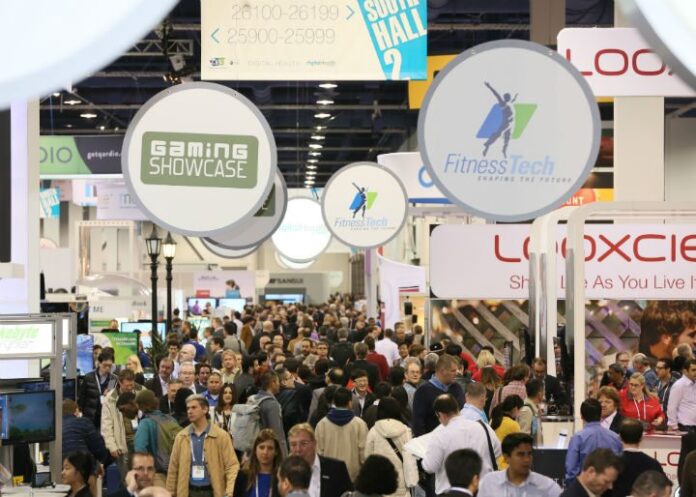Editor’s Note: Welcome to our weekly Reality Check column where C-level executives and advisory firms from across the mobile industry share unique insights and experiences.
You have probably been hearing quite a bit in recent months about the “Internet of Things” coalescing into a major high-tech business opportunity. You are likely to hear a lot more about this during the upcoming 2015 Consumer Electronics Show in Las Vegas.
IoT converges intelligent products and services that communicate with each other and with people over global networks. As a market, it has arrived. Many of the elements of IoT are already here, and the full benefits and markets are being created. At this juncture, IoT is ready for prime -time exposure at CES, one of the world’s largest high-tech events every year.
The range of high-tech devices is exploding, and so is the amount of connectivity and networking among them. All this will be evident at CES like never before. We expect to see the “always connected” consumer become more pervasive than ever as connected devices and services become the norm in new, emerging and traditional product categories.
There will be several important stories to watch that are key drivers of this IoT market including:
• Growth in phablets squeezes tablets
• Industry goes “all in” on 4K televisions
• Growth in clinical and digital health care applications
• The insecurity of things
• Connected cars, seamless experience
Following are details about each:
Second big thing: Growth in phablets squeezes tablets
One of the central products in the IoT network is the smartphone. Historically, CES has been a launching pad for smaller, thinner and lighter smartphones. But CES 2015 will reverse toward these bigger handheld devices. This will be most evident in the rapidly growing “phablet” market.
Blending conventional smartphone and tablet functions, phablets have five-to-seven-inch screen sizes – in between the screen sizes of smartphones and tablets.
These big smartphones will grab the limelight because a growing number of consumers prefer the bigger screens to view photos, watch videos and movies, and play video games. To meet the demand for consuming rich, immersive content, expect to see an emphasis on phablet screen resolution and quality.
Third big thing: Industry goes ‘all in’ on 4K TVs
For the past few years, 4K TVs have been a visual highlight – they have four times better picture quality than traditional TVs. While high prices and limited 4K content have dampened consumer demand, market dynamics are changing.
This year the story to watch is how the industry overcomes these barriers to accelerate the growth of these stunning TVs. TV makers have been shifting their manufacturing capacity to be “all in” on the 4K TV market opportunity. This has helped drive down costs. We expect to see many more sets at very compelling consumer price points.
But while TV manufacturers are all in on this market, there is still a dearth of 4K content available. To address the demand for more content, there are also likely to be announcements about how companies will use new software platforms to manage, deliver and monetize digital video services. We expect to hear more about strategies from companies on how they plan to meet the need for content through new hardware and streaming services.
Fourth big thing: growth in clinical, digital health care applications
In the health care arena, a key development will be the growing number of new products for clinical applications. Examples include devices that collect data about a person’s glucose level, heart rate and body temperature. This emphasis on clinical devices indicates a desire by more consumers to possess health care devices that help them manage more serious health needs.
The focus on clinical health care products marks a change from last year when the big story was about new wearable fitness monitors. While fitness monitors introduced consumers to the potential of managing their wellness, they are ready to focus on measuring more critical health metrics. An intriguing story will be how companies balance the speed of innovation vs. the regulatory requirements that need to be met to commercialize clinical products.
Fifth big thing: the insecurity of things
Security has never been a particularly big CES story, but this year it will be significant. Recent high-profile developments in the high-tech world have heightened consumers’ concerns about the security of their personal data on digital devices. Moreover, as the IoT market continues to expand, more consumer electronic devices are delivering services that generate vast amounts of data. These converging trends are creating more demand than ever for security products and services.
With close to 70 companies listed as exhibitors of personal privacy products or services, digital security and trust will be key themes running throughout the show. There will likely be more announcements than ever for products, applications and services that improve personal security.
Sixth big thing: connected cars, seamless experience
The connected car – another central hub of the converging IoT – will be a bigger story at CES this year. Like 4K TVs, the focus will not be on how “cool” they look and their conceptual intrigue. It will be about the growing number of people who are actually driving connected cars.
To address that trend, automakers will show how they are embedding connectivity into vehicles that enables the car to become an extension of the smartphone. More advanced tools such as text-to-speech for safe social media updates on a person’s smartphone, and updates about a car’s performance and maintenance will be incorporated into mainstream production vehicles.
John Curran is a managing director for Accenture’s communications, media and technology group. He can be reached at john.p.curran@accenture.com.

